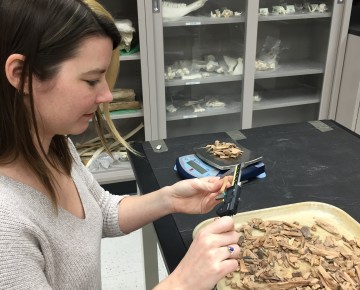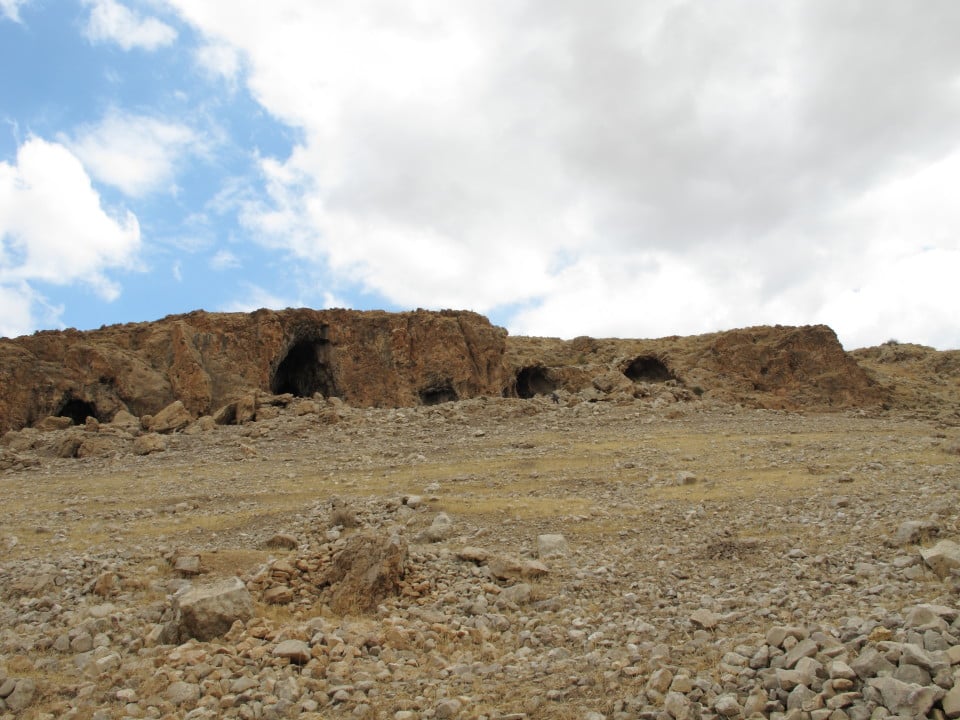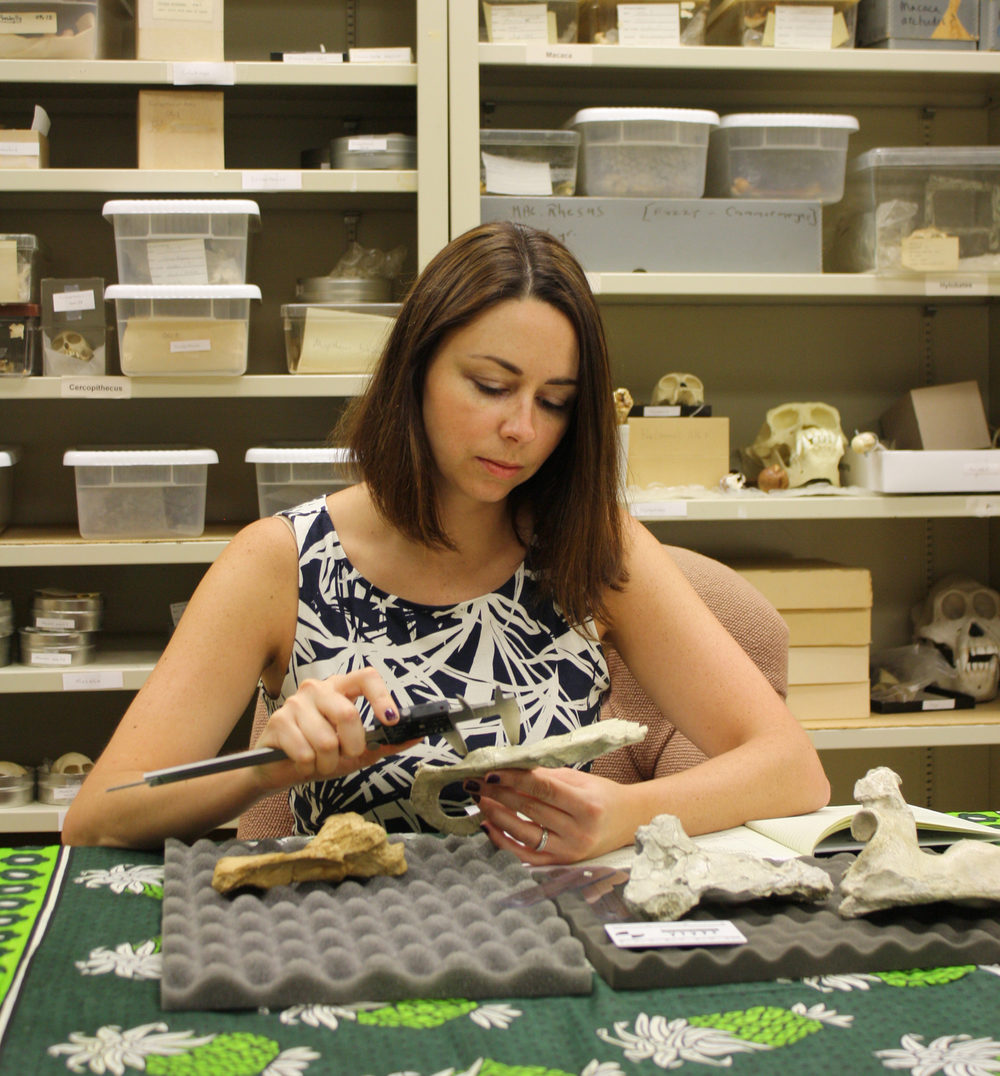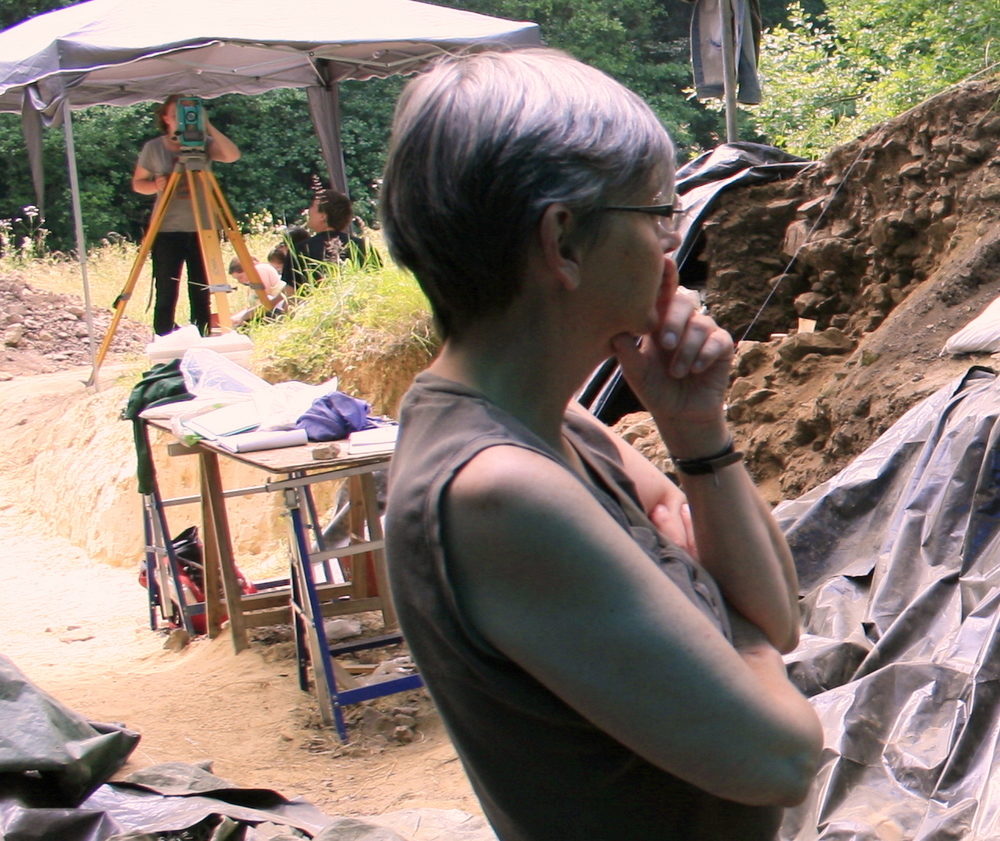Grantee Spotlight

Jamie Clark (University of Alaska Fairbanks) was awarded a Leakey Foundation Research Grant during our fall 2015 cycle for her project entitled “Early Upper Paleolithic hunting strategies at Mughr el-Hamamah, Jordan.”
Understanding the reasons behind the success and spread of our species (Homo sapiens sapiens) relative to archaic humans such as the Neanderthals is a major focus of research within paleoanthropology. A significant amount of research has centered on the Levant due to its potential as a corridor for population expansion out of Africa. Not only does the region preserve a number of sites associated with the Early Upper Paleolithic (EUP; presumably produced by modern humans), but it also preserves a rich record of Neanderthal occupation. The site of Mughr el-Hamamah (MHM, Jordan) is one of only a few sites in the southern Levant that both dates to the initial stages of the Early Upper Paleolithic (EUP; 45-39 ka cal BP) and has extensive faunal preservation. The site thus offers a unique opportunity to explore questions relating to human subsistence and landscape use during a critical period in the later expansion of our species from Africa into Eurasia.

Our project has two primary components: zooarchaeological analysis (to be conducted by Jamie Clark) and isotopic analysis (to be conducted by Gideon Hartman, co-PI). Zooarchaeological work will focus on the analysis of the large assemblage of identifiable bones (~11,000 specimens). Stable isotope work will focus on the analysis of carbon and oxygen isotopic data deriving from the tooth enamel from two key prey species: gazelle and fallow deer. We will combine these datasets in order to address three distinct issues: First, to explore the hypothesis that EUP populations had a wider diet breadth than their Middle Paleolithic (MP) counterparts. Second, to reconstruct environmental conditions in the eastern Jordan Valley. Finally, we will develop a model of landscape use and subsistence strategies that will provide a baseline for comparison with sites that pre- and post-date the EUP, allowing for new insights into variation in the adaptive strategies of MP and UP populations in the region.



